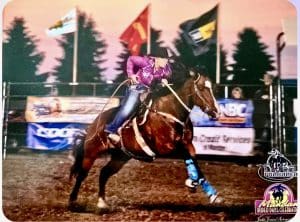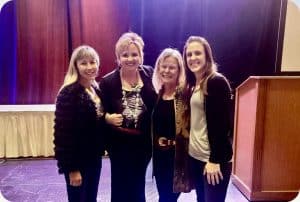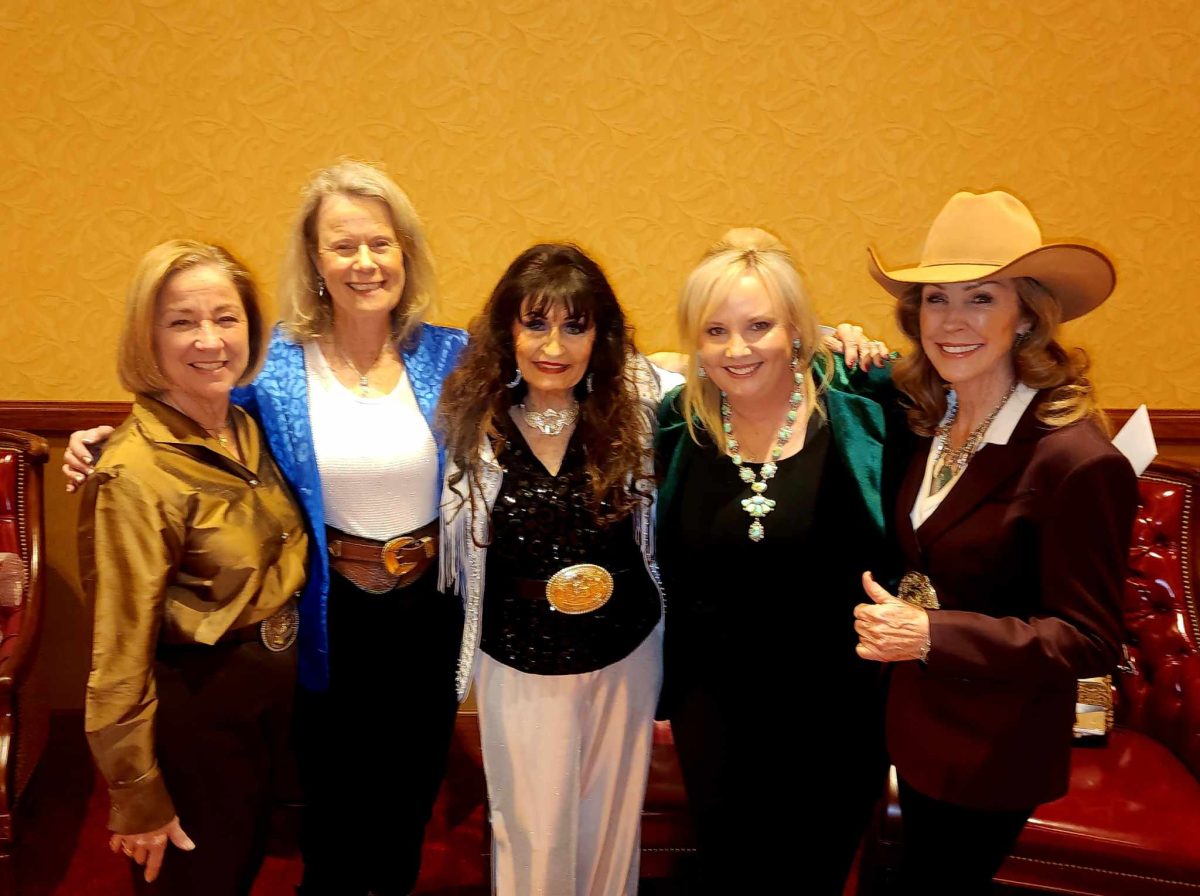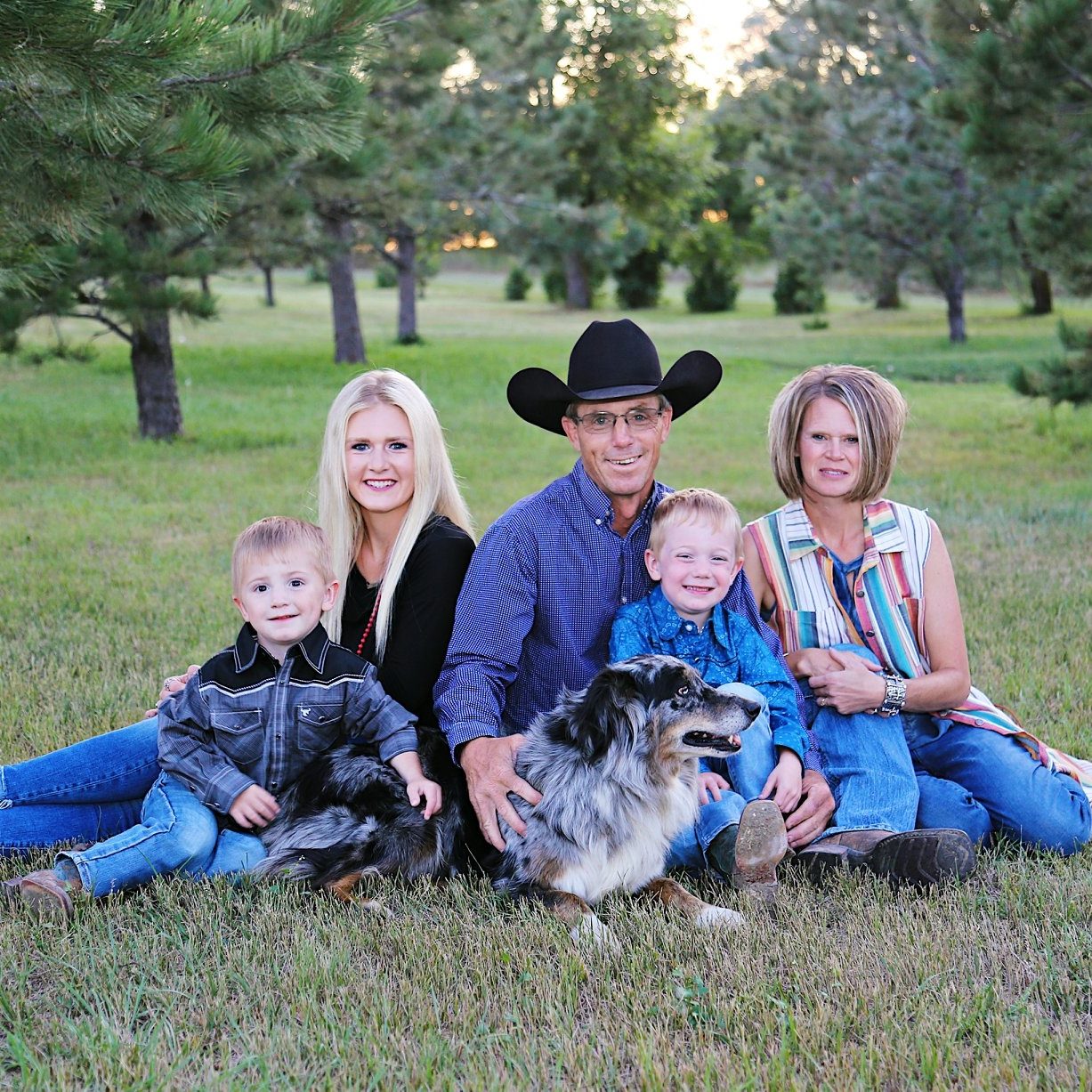Rodeo action inside the arena serves as the central hub, providing a network of diverse avenues to promote the sport beyond the arena walls of competition. Whether a competitor or advocator, the passion pulses through the veins with a strong commitment to the rodeo industry’s continued success.
Leaders in the industry are driven by the desire to preserve its rich heritage with a steadfast commitment to the future. It takes a strong voice, innovative ideas, and a relentless dedication to pave a path for positive growth.
Heidi Uecker-Schmidt of Belfield, N.D. channeled her love for rodeo into a leadership position, helping shape the future of rodeo as the Vice President of the Women’s Professional Rodeo Association (WPRA). She says her passion was sparked by a love for a horse wrapped up into a rodeo atmosphere, establishing deep roots that has guided her on a journey promoting the advancement of rodeo.
Rodeo has been an integral part of your life, igniting a passion to compete, spilling over into a notable advocator of the sport. As you drifted from competitor to advocator, share how your journey began.
“As with anyone who loves the sport, it began with a love for the horse. I was blessed to have incredible equine partners in my youth and high school days. As I transitioned into professional rodeo, I found new but equally cherished partners.”
“I believe one of the key qualities of being an advocate for rodeo is having competed at both the circuit and national level and continuing to do so. While I have taken a brief break, I eagerly anticipate returning to the professional rodeo trail this summer.”

[Womens Professional Rodeo Association (WPRA) Barrel Racer and WPRA Vice President Heidi Uecker-Schmidt. Photo: Jackie Jensen Photography]
“Advocacy in rodeo generates ongoing learning and a willingness to understand the sport from various perspectives. When you gain knowledge on the viewpoints of competitors, contractors and committees, it becomes easier to help bridge gaps that may exist between entities.”
Strong and knowledgeable leadership is vital in all industries as it provides direction, amplifies the voice of groups and fosters unity. You have stepped into the leadership role as the Vice President of the WPRA, share the essence of your “WHY” behind taking on the influential position.
“Depending on the day, I ask myself this same question, lol. If I were to ponder the “WHY” behind it all, it would be my drive to continue to make a difference in the sport I love and the association that has profoundly influenced countless women in rodeo (WPRA).”
“When a board composed of diverse women from across the country chose to appoint the Badlands Director as their Vice President, it was an honor. They put a trust in me that I did not take lightly. This trust propelled me to run for the position again, leading to my successful election by the membership of the WPRA. Every day, I strive to enhance whatever I can whether it is improving ground conditions across the country, implementing a revolutionary timing system, or fostering better communications among membership, committees, contractor partners, as well as the PRCA.”
The WPRA is a crusader for the advancement of women’s rodeo on all levels, requiring strong voices within the association. As the Vice President you are involved in all aspect of the association, unpack your role in moving the WPRA forward.
“That’s a lot to unpack! I firmly believe advancing the association forward is imperative. Over the past decade, the industry has changed exponentially, by having young, enthusiastic members on our board to drive the WPRA’s progress is incredibly rewarding. Like any organization, we must evolve with the times; there’s no going back and repeating history.”
“I am frequently asked about the hours I dedicate to the WPRA each week. On average, it’s about 50 hours a week, 20-40 calls daily depending on the issues at hand, 5-10 committee or board calls weekly (I try to at least listen to all committee calls), as for text messages, I hesitate to tally them up. Members can attest to one thing; whether they are in the top 15 in the world or are a permit member, I will always answer my phone or call back, regardless if the topic is controversial or a member is upset.”
“Communication is key. To maintain a consistent trajectory forward, communication with members, committees, contractors, judges, secretaries, and our PRCA partners is vital. Embracing innovative ideas like the timing system, systematically help put the advancements in place. Through open minds and communication, I envision a very bright future for the WPRA.”
In 1948 the WPRA was founded by a group of women who banded together to add color and femineity to a man drive sport, creating the first professional sports association for women in rodeo. The WPRA has exploded in opportunities for women over the decades, convey the vision that will lead us into the future of women’s rodeo?
“One association, now two events, thriving TOGETHER. Since the explosion of the breakaway roping over the last 5 years, life in the WPRA has changed, and changed quickly and for the better! That is not without hiccups of course, we call them growing pains.”
“The vision is to embrace change without fear and to actively guide and shape it for the betterment of all women in rodeo, regardless of the event. When our former roping director and I helped push breakaway roping into its first circuit finals EVER, in the Badlands Circuit, it was very scary! However, through excellent communication with all involved, the door opened. Working on a board with such dedicated and fearless women has been incredible, and I hope to continue to do so.”

[From left to right: Prairie Circuit Director Cindy Gillespie, Womens Professional Rodeo Association Vice President Heidi Uecker-Schmidt, Womens Professional Rodeo Association CEO Janet Cropper, Montana Circuit Director Dillon McPherson. Photo: submitted]
To the women who are blazing a trail in the rodeo industry from a competitor to business owner, can you elaborate on the importance of assuming leadership roles and using their voice.
“No one should be afraid to use their voice, and I sure hope I am teaching my daughter that. Nevertheless, I’ve discovered that there are effective ways to utilize your voice, it all comes down to the importance of communication and cultivating relationships.”
“Let’s use Cheyenne last year as an example, we were having a little ground trouble and if things are not unfolding as members believe they should, I am guaranteed to receive a call. Through relationship building, I knew the best “dirt guy” around was in Salt Lake City. Our director asked the Cheyenne committee if they would be willing to have him take a look, and they graciously said yes. A quick call to Randy Spraggins from me, and he was on his way. Through communication and partnership, a new arena record was set and then quickly broken. This type of relationship building has in fact made my voice and the voice of the WPRA stronger.”
“I encourage everyone to have a voice and use it to the best of their ability. The entire WPRA Board, including myself, is here to advocate for its members”– WPRA Vice President Heidi Uecker-Schmidt.


